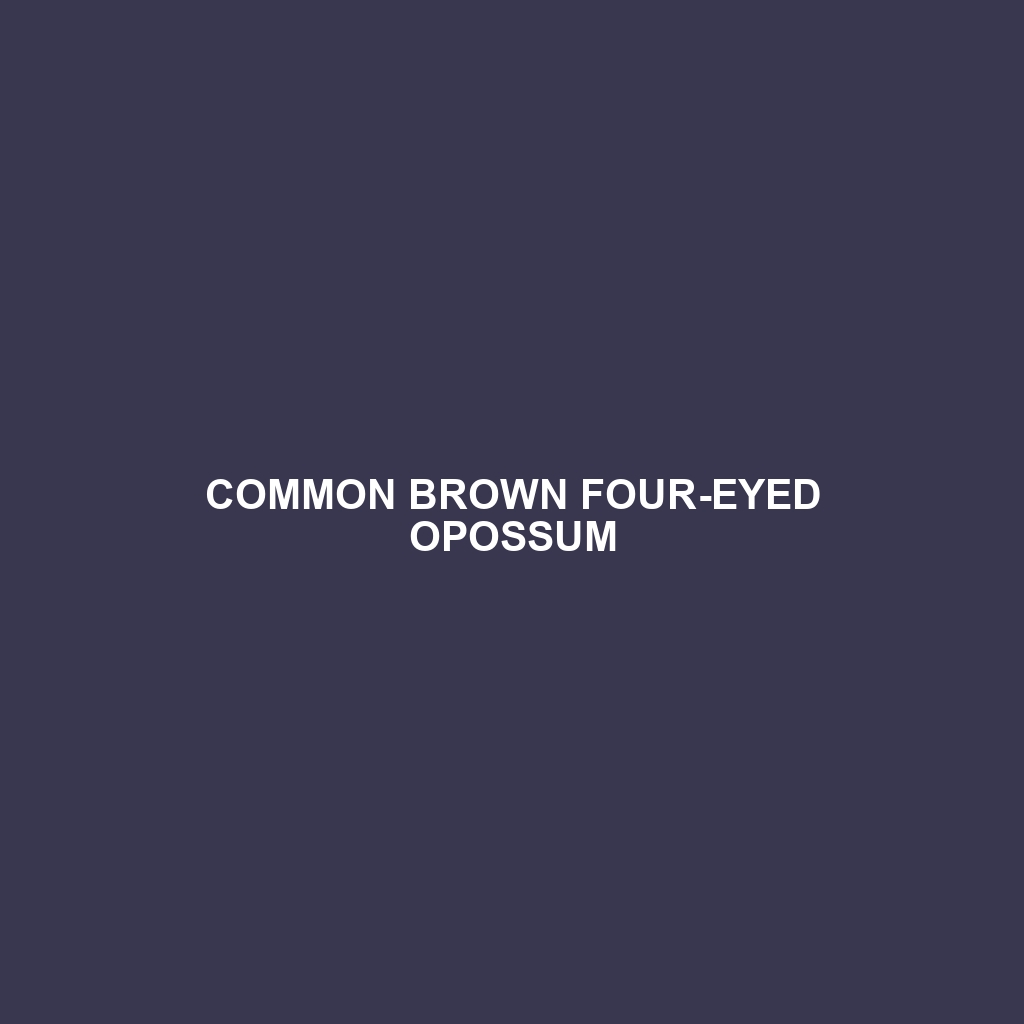Guianan Brown Four-eyed Opossum (Metachirus nudicaudatus)
The Guianan Brown Four-eyed Opossum, scientifically known as Metachirus nudicaudatus, is a small, nocturnal marsupial native to the tropical forests of South America. Distinguished by its unique facial markings that resemble a second set of eyes, this solitary and elusive creature plays a vital role in its ecosystem, contributing to seed dispersal and insect population control.
Physical Characteristics
Size: Adult Guianan Brown Four-eyed Opossums typically measure around 25 to 35 centimeters (10 to 14 inches) in body length, with an additional tail length of approximately 25 to 40 centimeters (10 to 16 inches). They generally weigh between 200 to 300 grams (7 to 10.5 ounces).
Coloration: Their fur is predominantly brown with a slight reddish hue, providing excellent camouflage within the forest floor. The underbelly is lighter, often a creamy white.
Special Features: The most striking feature is the white or creamy-colored spots above each eye, giving the illusion of having four eyes. This distinctive marking is thought to serve as a deterrent to predators.
Tail: Their tails are prehensile and mostly hairless, serving as an additional limb to grasp branches and aid in climbing.
Behaviors
Social Interactions: The Guianan Brown Four-eyed Opossum is primarily solitary, coming together only for mating. They are nocturnal and spend the day resting in nests made from leaves and twigs.
Feeding Habits: Omnivorous in nature, their diet includes fruits, insects, small vertebrates, and carrion. They are also known for their role in seed dispersion, aiding in the propagation of various plant species.
Ecological Role: As both predator and prey, they help control insect populations and serve as a food source for larger predators. Their seed-dispersing activities are crucial for maintaining the diversity of tropical forests.
Habitats
Geographical Range: The Guianan Brown Four-eyed Opossum is found predominantly in the northern parts of South America, including the Guianas, Venezuela, and parts of Brazil.
Environment: They inhabit tropical rainforests, both primary and secondary, and can occasionally be found in savanna and scrubland regions. They prefer dense, humid environments where they can easily hide and forage.
Adaptations
Nocturnality: Being nocturnal helps them avoid many daytime predators and exploit food resources that are more abundant or accessible at night.
Camouflage: Their fur coloration and markings help them blend seamlessly into the forest floor and understory vegetation, aiding in avoiding detection.
Prehensile Tail: This adaptation allows them to navigate the complex three-dimensional environment of the forest with ease, enhancing their ability to forage and evade predators.
Conservation Status
Current Status: The Guianan Brown Four-eyed Opossum is currently listed as Least Concern by the IUCN Red List. However, like many species, they face threats from habitat destruction due to logging and agricultural expansion.
Conservation Efforts: Efforts to conserve tropical rainforests and monitor populations help ensure the continued survival of this species. Protected areas and national parks play a significant role in their conservation.
Fun Facts
Misleading Name: Despite being called “four-eyed,” these opossums don’t actually possess an extra set of eyes. The name comes from the eye-like spots above their actual eyes.
Marsupial Traits: Like all marsupials, female Guianan Brown Four-eyed Opossums have a pouch where their young continue to develop after birth.
Versatile Diet: Their adaptability in diet allows them to thrive in various environments where food availability may fluctuate.
By understanding the unique attributes and ecological importance of the Guianan Brown Four-eyed Opossum, we can better appreciate the rich biodiversity of tropical ecosystems and the need to protect them.
